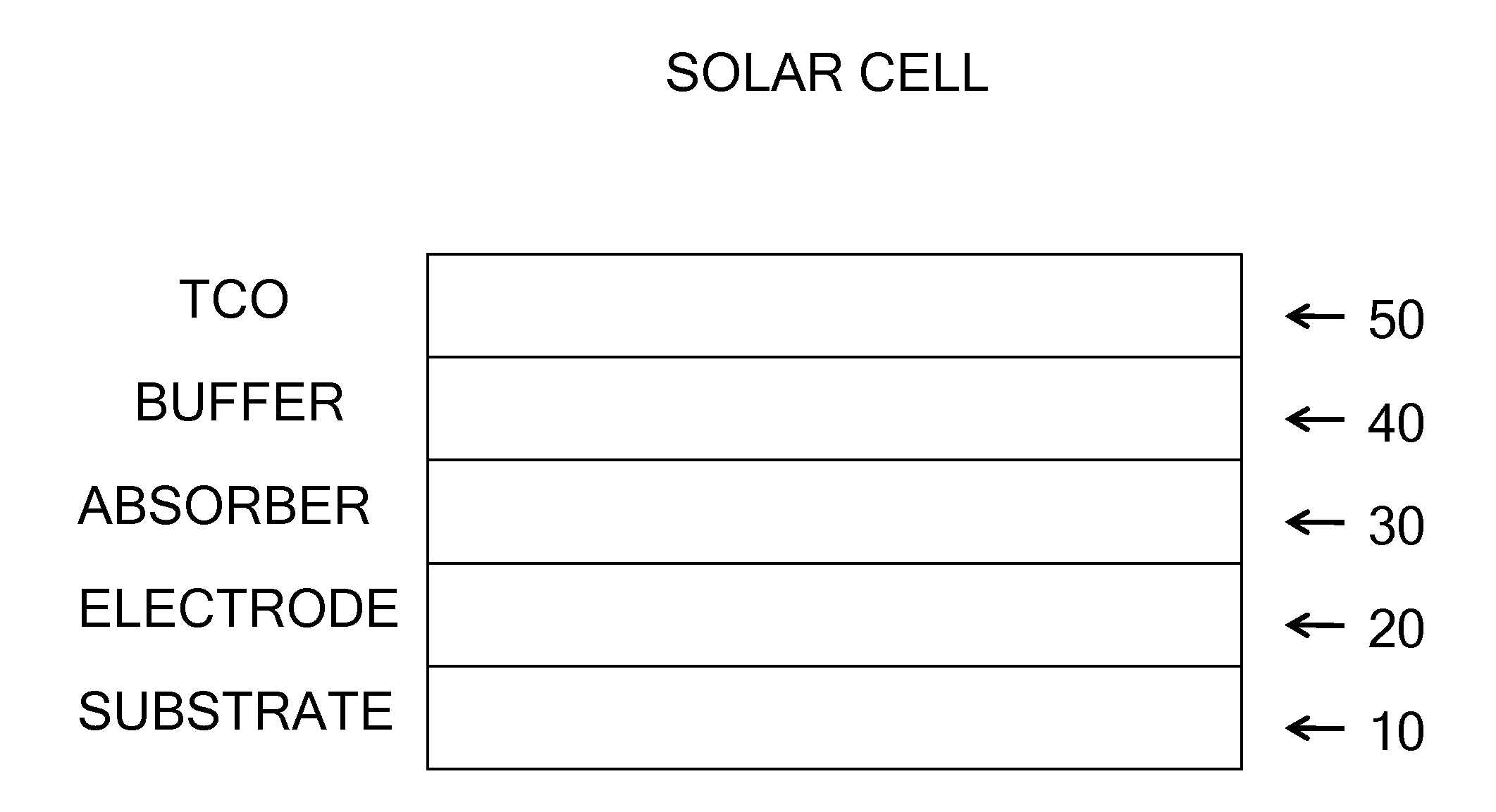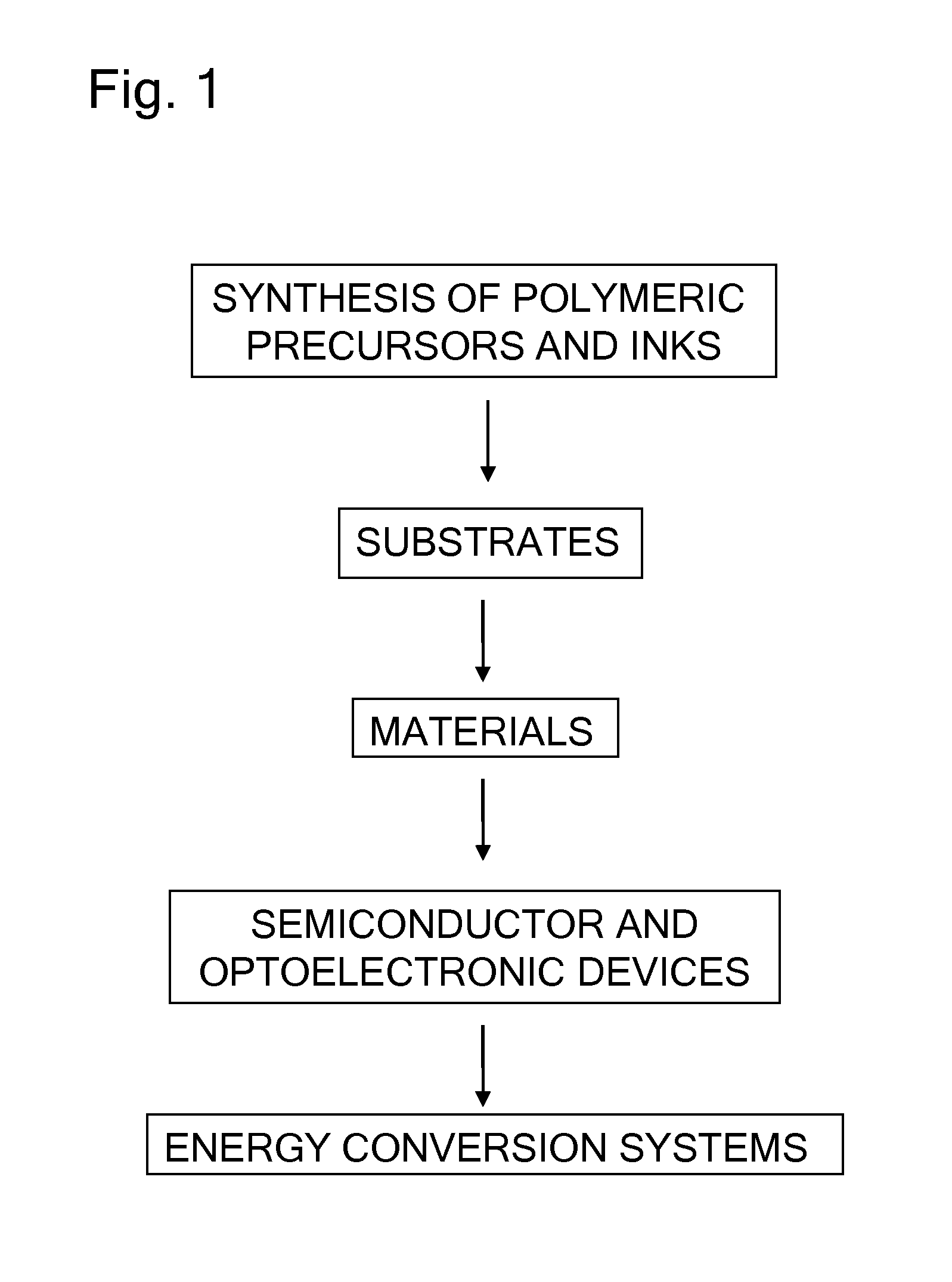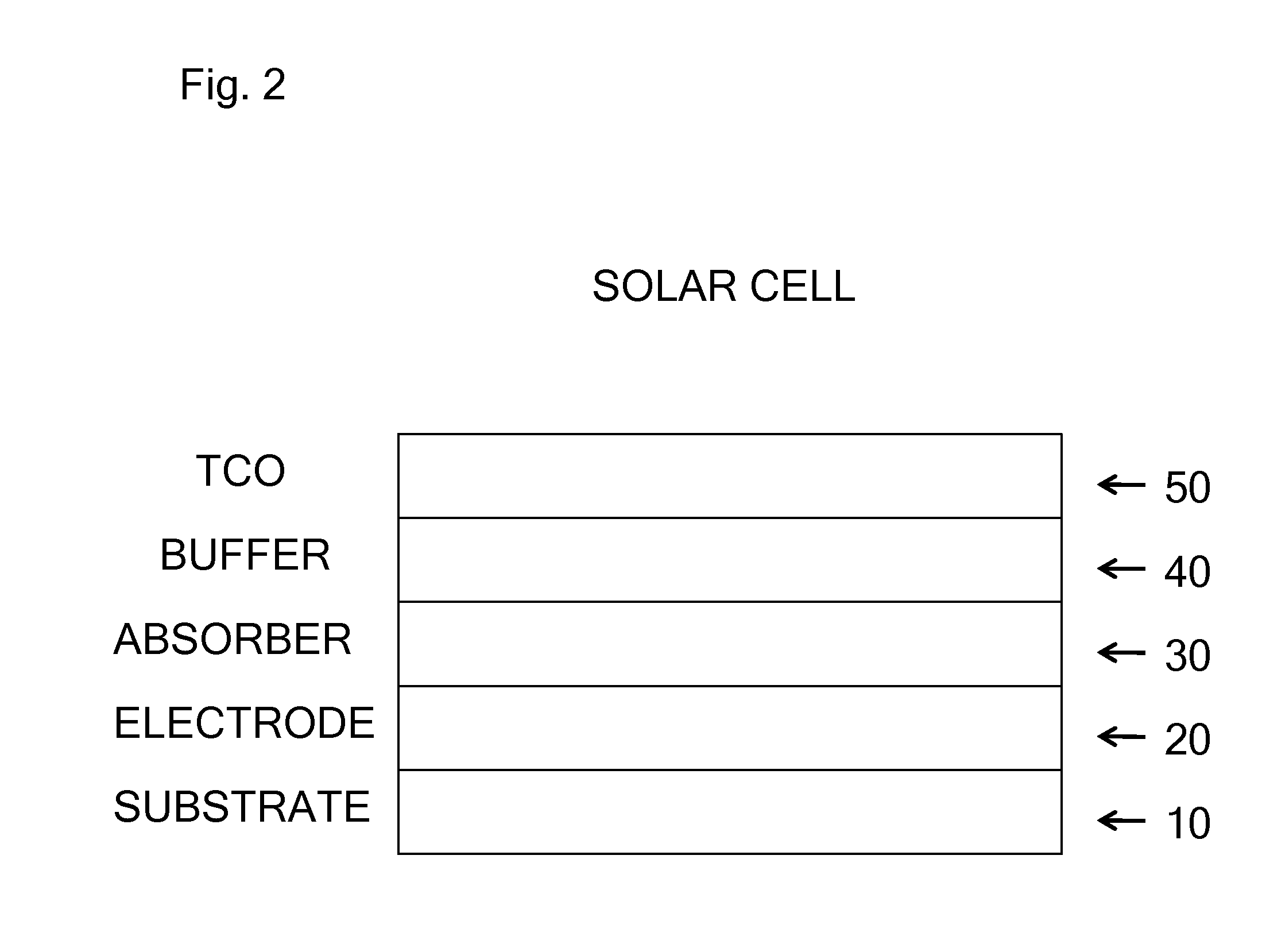Inks with alkali metals for thin film solar cell processes
a technology of solar cells and alkali metals, applied in the field of thin film solar cell processes with alkali metals, can solve the problems of limited light conversion efficiency, limited ability to control product properties through process parameters, and limited use of optoelectronic or solar cell products in general
- Summary
- Abstract
- Description
- Claims
- Application Information
AI Technical Summary
Benefits of technology
Problems solved by technology
Method used
Image
Examples
example 1
Sodium-Containing Inks for Photovoltaic Absorbers
[0180]FIG. 4: FIG. 4 shows results of methods for controlling the sodium concentration in an ink used to make a CIGS photovoltaic absorber. By controlling the concentration of sodium in the precursor ink, the sizes of CIGS grains produced could be controlled. FIG. 4 shows that the sizes of CIGS grains were related to the concentration of sodium in the precursor ink used to make the CIGS material. For these examples, the annealing was done at 525° C. for 5 min in the presence of Se vapor in an enclosure.
[0181]FIG. 5 shows cross-sectional micrographs corresponding to the data of FIG. 4.
example 2
[0182]A solar cell was made by the following process.
[0183]A first ink was prepared by dissolving the Cu-enriched CIGS polymeric precursor compound {Cu1.1In0.7Ga0.3(SetBu)1.1(SenBu)3.0} with 0.5 at % Na supplied via NaIn(SenBu)4 in heptane, 50% polymeric precursor content, by weight, followed by dilution with cyclohexane to about 25% polymeric precursor content, by weight, in an inert atmosphere glove box. The resulting ink was filtered through a 0.2 μm PTFE syringe filter prior to use.
[0184]A second ink was made prepared by dissolving the Cu-deficient CIGS polymeric precursor compound {Cu0.85In0.7Ga0.3(SetBu)0.85(SenBu)3.0} with 0.5 at % Na supplied via NaIn(SenBu)4 in heptane, 25% polymeric precursor content, by weight, in an inert atmosphere glove box. The resulting ink was filtered through a 0.2 μm. PTFE syringe filter prior to use.
[0185]An 0.04 mL aliquot of the first ink was deposited onto a piece of 2 inch by 2 inch square Mo-coated sodalime glass substrate using a knife coat...
example 3
[0194]A solar cell was made by the following process.
[0195]A first ink was prepared by dissolving the Cu-enriched CIGS polymeric precursor compound {Cu1.1In0.7Ga0.3(SenBu)1.1(SenBu]3.0} with 0.5 at % Na supplied via NaIn(SenBu)4 in heptane, 50% polymer content, by weight, followed by dilution with cyclohexane to about 25% polymer content, by weight, in an inert atmosphere glove box. The resulting ink was filtered through a 0.2 μm PTFE syringe filter prior to use.
[0196]A second ink was made prepared by dissolving the Cu-deficient CIGS polymeric precursor compound {Cu0.85In0.7Ga0.3(SetBu)0.85(SenBu)3.0} with 0.5 at % Na supplied via NaIn(SenBu)4 in heptane, 25% polymer content, by weight, in an inert atmosphere glove box. The resulting ink was filtered through a 0.2 μm PTFE syringe filter prior to use.
[0197]An 0.04 mL aliquot of the first ink was deposited onto a piece of 2 inch by 2 inch square Mo-coated sodalime glass substrate using a knife coater (Global Instrument) in an inert ni...
PUM
 Login to View More
Login to View More Abstract
Description
Claims
Application Information
 Login to View More
Login to View More - R&D
- Intellectual Property
- Life Sciences
- Materials
- Tech Scout
- Unparalleled Data Quality
- Higher Quality Content
- 60% Fewer Hallucinations
Browse by: Latest US Patents, China's latest patents, Technical Efficacy Thesaurus, Application Domain, Technology Topic, Popular Technical Reports.
© 2025 PatSnap. All rights reserved.Legal|Privacy policy|Modern Slavery Act Transparency Statement|Sitemap|About US| Contact US: help@patsnap.com



